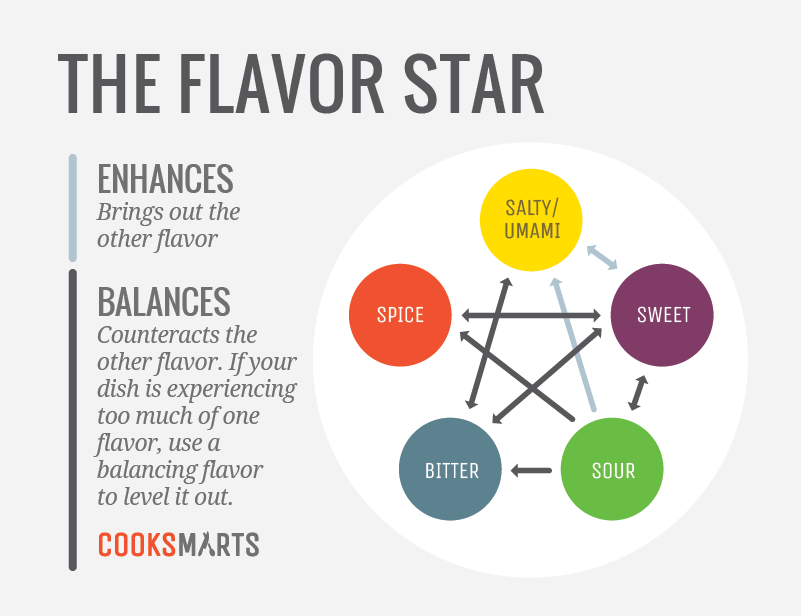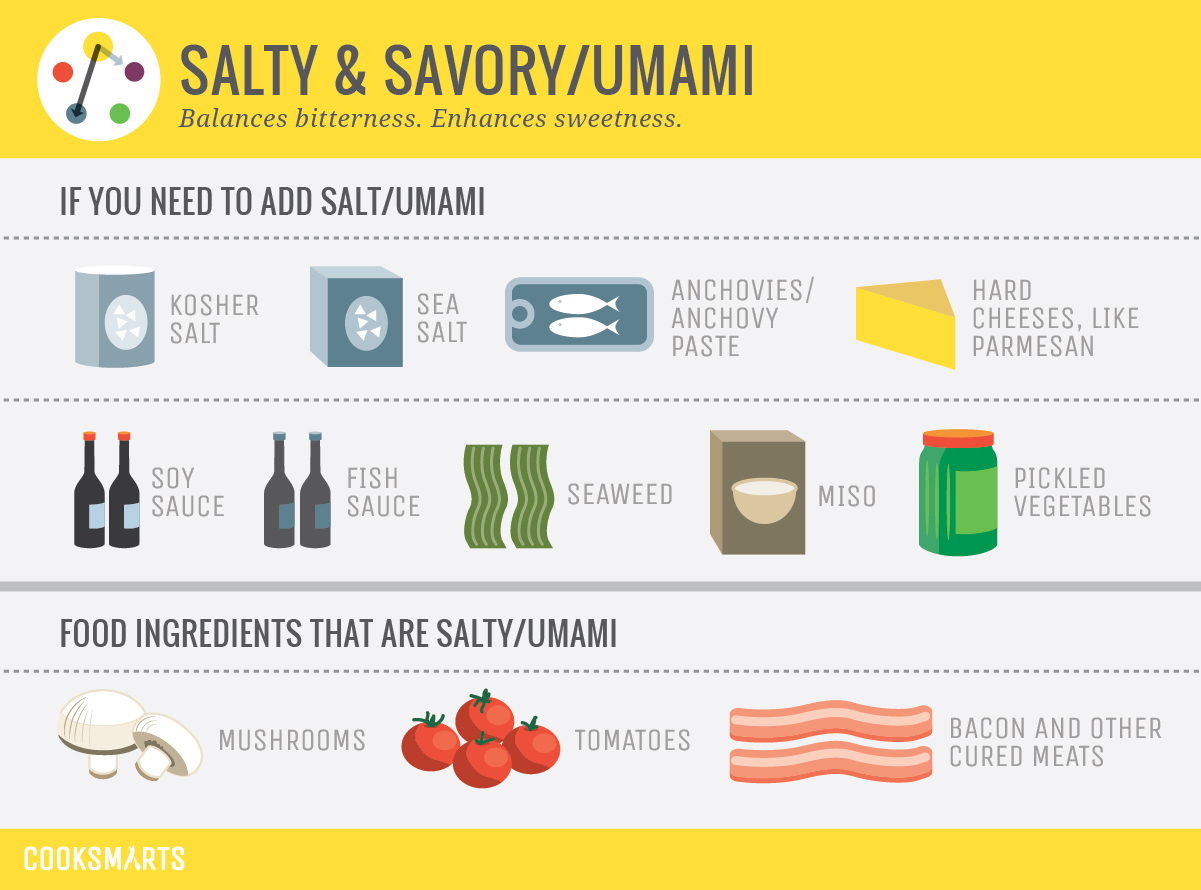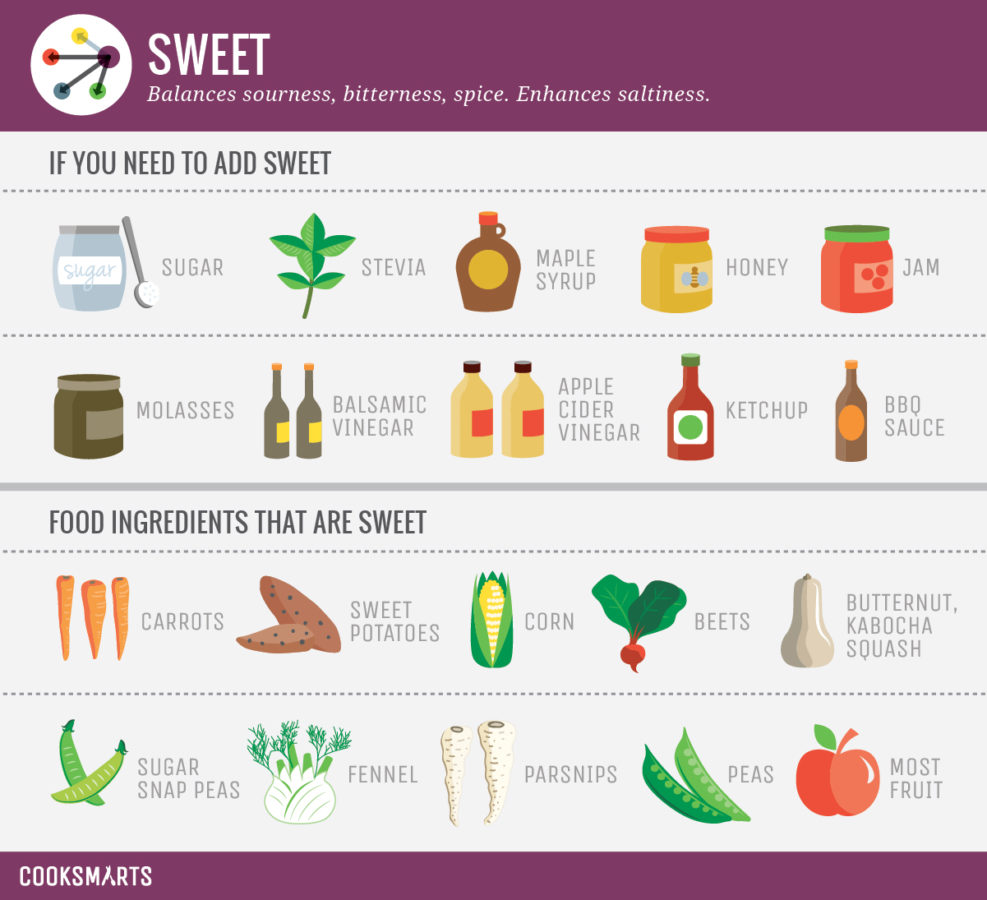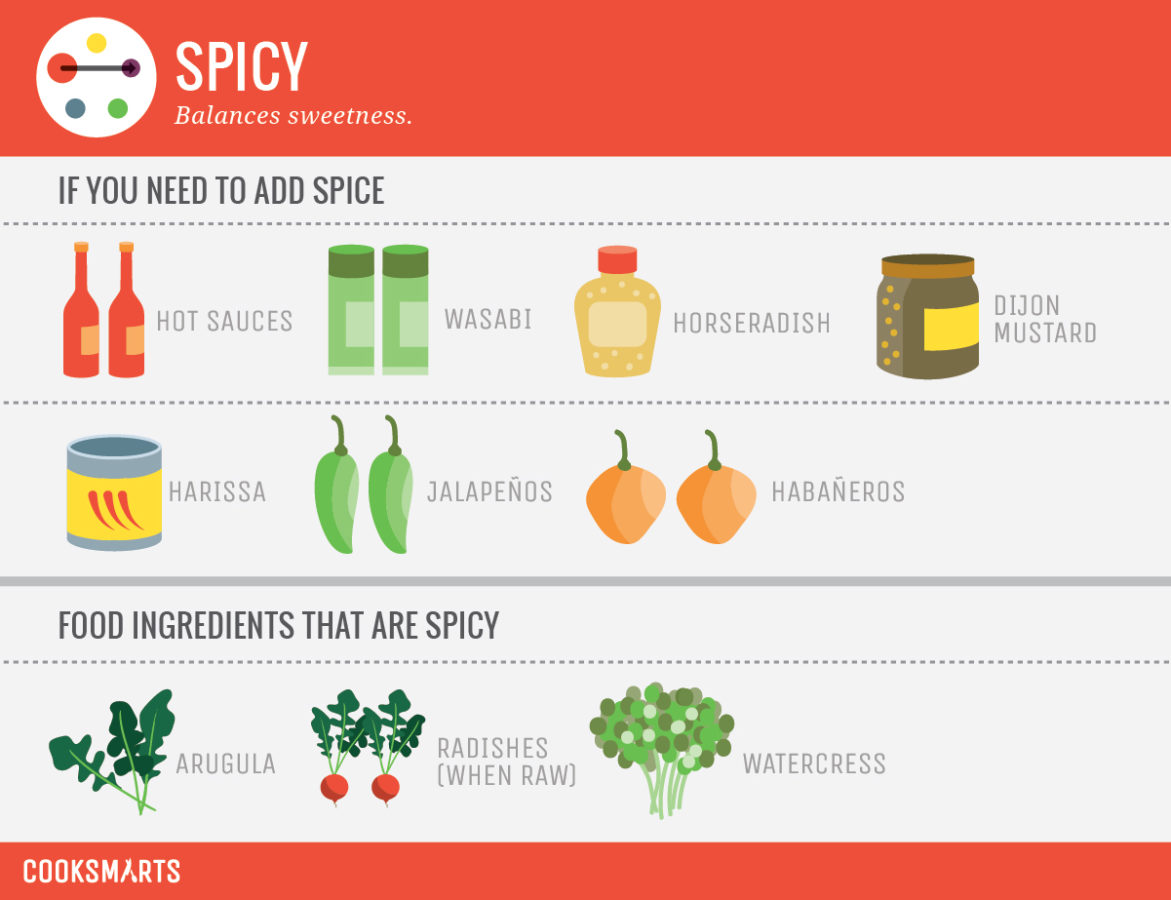You don’t need to go to culinary school to learn how to flavor like a pro
Combining and balancing flavors is an important cooking concept that will allow you to create flavorful dishes every time you cook, and our free infographic flavor guide will teach you how.
We created a Flavor Star to show you how the 5 basic flavors – salty, sweet, sour, bitter, and umami – work to balance or enhance each other. We’re also including spice as a flavor, because we love a little heat!


If a flavor balances another flavor, it means it counteracts or offsets that flavor to achieve an even more harmonious taste. For example, spice balances sweet and sweet balances spice. That’s why Mexican hot chocolate is finished with a pinch of cayenne pepper – the spice works with the sweet to produce a more dynamic flavor.
Flavors can also enhance each other. If you look at the Flavor Star, you see that salty enhances sweet and vice versa. This is why there are sea salt caramels or sea salt chocolate chip cookies. That light addition of saltiness actually amplifies the sweetness of those caramels and cookies.
Download the full infographic flavor guide below to learn how to create more dynamic flavors, rescue dishes that have been overly flavored, and also how to amplify certain flavors.

Now let’s break down each flavor and increase your cooking smarts some more!

Salty & Umami / Savory
Umami simply means “yummy” in Japanese, and it’s hard to describe what the flavor of umami tastes like. For simplicity’s sake, we’re lumping it with salty in this lesson, because they share a lot of the same flavor attributes.
If you ever end up with a bland dish, the likely issue is that it’s just under-seasoned (lacking salt or umami-ness). Under-seasoning is not just a rookie mistake, so don’t ever feel bad about a bland dish – just learn how to fix it with our tips!
Salt is the obvious option on how you can fix an under-seasoned dish, but we’ve come up with a bunch of different ideas on utilizing other condiments and ingredients that can add savory depth to your meal. Some foods also naturally have an umami flavor.
Here are some ideas to add savory / umami flavors:
- Add a splash of soy sauce, fish sauce, or miso to broth or stock
- Saute veggies with a bit of anchovy paste
- Simmer soup with the rind of parmesan cheese

Sweet
Sweetness is not just for desserts. According to our Flavor Star, sweetness balances sour, bitter, and spice, so if you have dishes or ingredients that have any of these flavor profiles, add a bit of sweetness to create something even more interesting.
Some ideas:
- Add some honey, maple syrup, or jam to an acidic vinaigrette to neutralize the sourness of the vinegar
- Toss roasted brussels sprouts, which are bitter, with some sweet BBQ sauce
- Add some sugar to an overly-spiced curry or soup
For ingredients that are naturally sweet, you can enhance their sweetness with something salty or umami flavored, like tossing roasted carrots and sweet potatoes with some miso paste.

Sour
We tend to finish most of our dishes with a bit of sour – usually lemon juice or even a splash of vinegar. This is because sour (or acid) enhances saltiness, brightening up the seasoning of the entire dish.
Sour also balances spice and sweetness. This is why a dollop of yogurt is perfect for a spicy curry or stew. It helps to counteract that heat, creating a new balance of flavors. It’s also why sweet and sour chicken is such a popular Chinese dish. They combine to produce a delicious new taste.

Bitter
Typically, you don’t want to add bitter to your meals, but if you do, according to the Flavor Star, you should use it to balance out salty or sweet flavors. You can do that with some coffee, cacao, grapefruit juice, or even beer.
Even though you rarely add bitter to dishes, there are lots of ingredients that are naturally bitter, namely our green vegetables. To make it a bit easier to enjoy these bitter veggies, you can add some sweet, salty, or even sour.
Try out these ideas:
- For a perfect combo, use a vinaigrette that’s a bit sweet, salty, and sour to accompany a salad with endive, spinach, radicchio, or kale
- Help your kids gobble down their broccoli by roasting them with a bit of brown sugar and / or balsamic vinegar
- Dip okra into yogurt for a delicious healthy treat

Spicy
Even though the Flavor Star spice balances sweet, we’re going to go a bit off the diagram here. Honestly, if you like a bit of spice in your food, just add spice and some kick to your meals!
Create deliciously balanced meals and find new ways to add flavors to your cooking
We hope this study of flavor profiles encourages you to use a variety of ingredients to maximize flavor in your cooking. For a handy cheat sheet, download the full infographic below for free and print out to hang on your kitchen wall or put in your cooking resources binder!
Also, you can get this infographic professionally printed to hang on your wall or fridge. Just head over to our Shop, where a portion of our merchandise profits are set aside to support food education.
Guide to Flavor Profiles
Create perfectly balanced and flavorful culinary masterpieces.
Over >50K have downloaded our Flavor Profile printout
Get it in your inbox, and create perfectly balanced and flavorful culinary masterpieces!
I acknowledge by requesting this info, I'll be added to Cook Smarts' newsletter list. I can unsubscribe at any time.
Sign me up to
